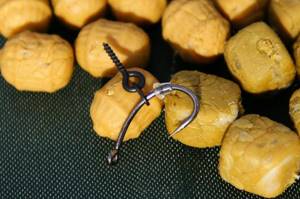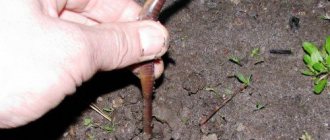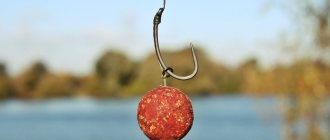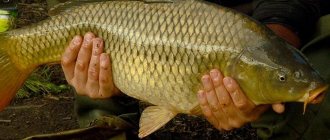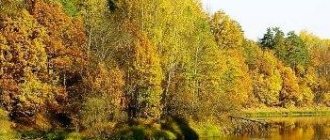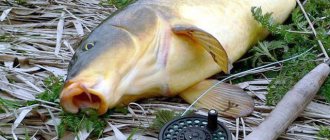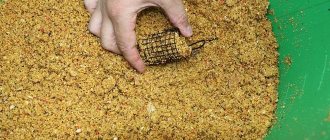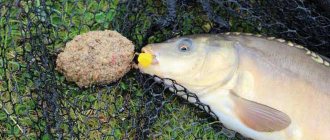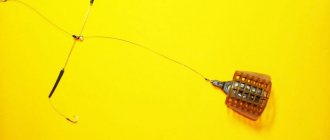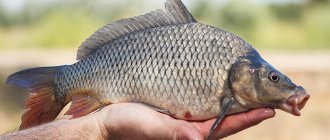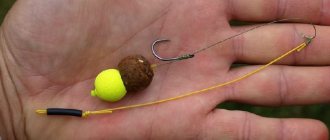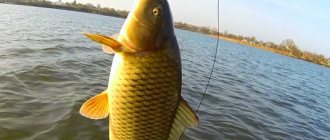Quite a lot of anglers are interested in carp fishing. Knowledgeable fishermen claim that success in this matter depends entirely on the choice of bait. Despite the fact that freshwater fish are very voracious, they are incredibly fastidious.
That is why it is so important to choose the right bait that will be able to interest the carp.
Baits are divided into the following types:
- Animal origin.
- Plant origin.
- Artificial.
Vegetable baits
For catching freshwater fish, baits of plant origin are actively used:
- bread balls;
- peas;
- pearl barley porridge;
- dough;
- corn;
- wheat;
The most important rule in any proposed plant bait is proper preparation with full preservation of taste.
Corn is the most common carp bait. In recent years, fishermen are increasingly using a canned version of the product, which has a sweet taste and enticing aroma. Canned corn is very easy to give any desired flavor or color.
You only need to add a few drops of flavoring or a little specialized dye to the container with the product.
Place the bait on hooks or hair type equipment.
Despite the popularity of using a canned variety of bait, experienced fishermen often prefer to cook corn with their own hands the old fashioned way. However, it is worth remembering that this process will require a certain amount of time.
You will need to soak the corn and leave it for 24 hours, and then heat it for 1-2 hours. After this, the grains are left to mature for 1-2 days. By preparing the grains with your own hands, you can prepare a large amount of bait and leave it in the refrigerator for storage.
Peas are an affordable bait for every fisherman. In addition, it attracts freshwater fish well. Bait the pea directly onto the hooks. The product can be used either canned or prepared with your own hands.
To prepare your own bait, you will need to soak the peas for 8-10 hours, then boil them for an hour and dry them outside for 30-40 minutes. The process is quite easy, but it will take a little time.
At all times, carp went well on bread balls. Both rye and wheat varieties of bread can be used for bait. It all depends on the body of water and the taste preferences of the fish. You can place bread pulp formed into a ball on the hook or a small piece of crust. The bait is used for fishing both in the upper layer of the reservoir and at the bottom surface.
Barley and wheat for fishing should be pre-soaked for 3-4 hours and boiled until the grains are soft.
To prepare dough for bait, you can take 1 or several types of flour (cereals) and, according to the recipe for hominy or mastyrka, bring it to the desired state. It is very important that the dough does not stick to your hands and that flour does not fall out of it.
All baits of plant origin work great only in the summer months.
What do carp bite on?
To begin with, I would like to note that by the term “bait,” experienced fishermen mean only bait of animal origin. These can be worms, maggots, bloodworms, etc. Whereas the word “bait” means not only bait, but also various kinds of vegetable bait - dough, pearl barley, peas, corn and many others. etc. At the same time, the carp bites both. Therefore, carp baits can be divided into:
- Vegetable baits (both various grains and flour - bread, dough, etc.).
- Bait (food of animal origin).
- Special baits (boilies, pellets, etc.).
- Artificial baits.
You can catch carp using various grain baits
So it is no coincidence that carp is called a pond pig. He received this nickname due to the fact that the diet of this fish includes a wide variety of food. Carp can bite on anything - even cheese, cottage cheese or berries. The main thing is that the food is tasty, aromatic and nutritious. This is what carp appreciate both in bait and in natural food.
And still, the carp fisher needs to carefully approach the issue of choosing a bait. The fact is that despite its gluttony and, in fact, omnivorousness, carp is often picky. Not every bait will impress him. This fish will not want to try every bait.
Animal bait
Among the baits of animal origin, we can highlight:
- Maggot - it is placed on a hook in 3 - 4 pieces.
- Bark beetle - used only in places where there are logs or trees that have fallen into the water surface in the reservoir. The hook is attached only to the part where the head is located, so that the whole body floats freely in the water.
- Caddisfly larvae are an excellent bait that carp are used to feeding on daily.
- Dragonflies and their larvae , as well as caddisfly larvae, are the natural diet of fish. Any larvae will become the most catchable bait if they are placed on a hook in combination with boilies.
- Worms (dung and earthworms) - it is better to choose dung worms, since they attract the attention of freshwater fish in the best way, thanks to their bright color, specific smell and maintaining active activity on the hook. It is recommended to place several of them on the hook. Carp is unlikely to be able to refuse such a delicacy.
It is worth noting that animal baits are effective at any time of the year, however, if in the summer they can be replaced with plant species, then in other months you simply cannot do without this type of bait.
What attachments to use
Based on the above, and often carp omnivorousness, several conclusions suggest themselves:
- A carp may well bite on bait that it has never tried before. In fishing there is always a semblance of a lottery and you just need to take it as a fact. Canned corn, peas, worms, homemade or store-bought boilies can work great. Out of pure curiosity, carp can even try a scented bait made of rubber, silicone or cork.
- Carp relatively quickly get used to new flavors that are regularly used by fishermen in bait. Over time, he begins to be caught using bait with an already familiar smell and taste. There were many cases when fish preferred such food to artificial food.
- Such attachments, which are included in the bait in large quantities, work somewhat worse, but at the same time provide little nutritional value for the carp.
- On cultural reservoirs, where the catch-and-release rule often applies, there are a lot of large, “best seen” individuals. Such fish gradually begin to avoid baits that they associate with an unpleasant hook. Large individuals generally become more selective and cautious.
- If the carp has a choice of baits offered, it always chooses. This must be taken into account when developing fishing tactics in pressured reservoirs.
We recommend reading: Catchable wobblers for trout fishing
Artificial bait
Among the artificially created carp baits, it is worth highlighting the incredibly popular ones:
Boyles
They are attached directly to hooks or used in hair equipment. Boilies consist of flour, to which are added eggs, casein, gelatin, a starch base, fish meal and, of course, various flavors.
In a specialized store you can buy bait that suits every taste:
- Meat type - consists of bone meal.
- Fish – the basis is fishmeal.
- Fruit – add a variety of fruits (apples, bananas, pears, plums).
- Spicy look - manufacturers include cumin, onion, garlic, vanillin.
- Sweet variety - here the main components are sugar and caramel.
According to heat treatment, the following types of boilies can be distinguished:
- Sinking - popular when fishing near the surface of the bottom.
- Medium buoyancy – suitable for fishing in deep water.
- Not subject to drowning - designed for catching carp near the surface of the water.
Pellets
A modern bait for carp, in recent years it has been used more and more among fishermen. Granules can be attached to hooks both lengthwise and crosswise. However, if the fish in the reservoir behaves extremely carefully, then the bait is attached exclusively lengthwise.
Granule-shaped nozzles are available for sale, both with and without mounting holes. Therefore, if you managed to purchase an option without holes, you should make them yourself. It is necessary to drill very carefully so that the granule does not crumble and process it in an oil base.
Experienced carp fishermen advise purchasing boilies with plum, strawberry and pineapple flavors for carp fishing. These smells attract fish even from long distances.
Special baits for carp
These include boilies and pellets, which are most often found in the form of finished fishing products. There are a huge number of types and options for such attachments. As well as manufacturers. After all, today the business of producing and selling products for carp fishing is very popular, which, in turn, is becoming a favorite hobby of millions of people.
What are boilies? This is a ready-made nozzle, which has a predominantly round shape and a diameter of 5 to 30 mm. Boilies consist of a variety of ingredients. These are crushed cereals, preservatives, flavor enhancers, flour, starch, dextrin and many others. etc. Carp really like this “dried vinaigrette”. After all, no other attachment will contain so many tasty and healthy components for fish. In addition, boilies also attract carp due to their color. These delicious balls have a variety of colors that can interest the fish.

Boilies are good bait for carp.
Carp boilies are divided into several types:
- drowning;
- floating;
- dusty.
In addition, there is a classification of boilies according to their composition:
- fish;
- fruit;
- sweet;
- spicy;
- meat.
Remember! To attach boilies you will need a special hair attachment. In addition, fishing with this type of bait is more effective with long-distance casting gear.
Boilies can be different in purpose and taste
Pellets are also a special carp bait. This is granular food. Fishing with it is reminiscent of fishing with boilies. Once in the water, the pellets granules dissolve, releasing nutrients and aromatic substances that awaken the fish’s appetite. The raw material components in this attachment are essentially the same as those used for the production of boilies.
However, the shape of the pellets is slightly different. These are not round balls, but small cylinders. The pellets are placed on the hook in a special way. Either with a “hair” (carp installation of equipment), or with a special miniature elastic band.
At the same time, pellets are even more often used as a component of bait, rather than as an independent attachment. Largely due to the fact that it consists of protein and various nutrients.
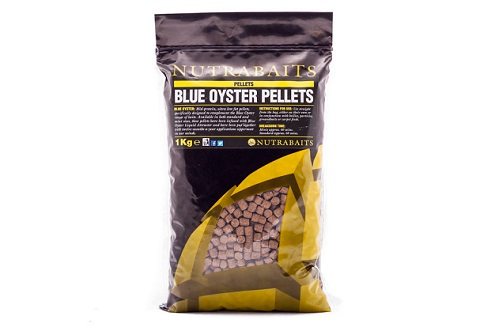
Carp also bite well on pellets
On a note! Today, independent preparation of boilies and pellets is also popular. There is nothing complicated about this. Moreover, recipes can be found on the Internet.
Additional options
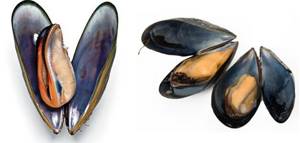
In addition to all the bait options described, fishermen with impressive experience use many baits made with their own hands.
Variants of baits and stages of their preparation with your own hands:
- A very effective attachment. Here you will need a base to which you will need to add all the components. The base can be semolina, flour and any ground cereals. It is to this mixture that you should add pellets or any dry food for dogs (cats), sinking boilies cut into 4 parts and, of course, flavorings. The aromas of strawberry, dill, hemp and honey are perfect. The cooking process is completed by adding bloodworms or maggots. All is ready! All that remains is to add water from the reservoir and form small balls that do not disintegrate.
- Mussel. In order to prepare a mussel for fishing, you need to carefully open it. Using a sharp knife, press the connector between the two parts of the shell and make a cut around the circumference until it opens. Only a small part of the mussel is suitable for fishing, namely the yellow leg. They put it on a hook and start fishing. The remaining parts of the mussels can be chopped and used to feed fish. This recipe will take a little time, since the ingredients will be subject to heat treatment. The bait will consist of the following components:
- cake;
- honey;
- pearl barley;
- breadcrumbs;
- semolina;
- peas;
- millet. To prepare, take peas, millet and pearl barley in equal quantities and fill the mixture with water and cook for 40-60 minutes. After cooking, drain off excess water and add a heaping tablespoon of semolina, cake, 3-5 tablespoons of breading and 2 tablespoons of honey to the mixture. Mix everything thoroughly. Form small balls from the resulting mixture.
- An old version of bait made from boiled carrots. Several carrots should be cut into small squares and boiled until the hook can easily enter the bait, but will not break it. A few minutes before the end of cooking, pour 2 tablespoons of cake into the pan and leave on the stove until it cools. The aromas of the cake are to the taste of freshwater fish and also give our bait a presentable appearance.
- Another catchy bait option was cheese and oatmeal sandwiches. This attachment is used in reservoirs with calm currents and has more than once attracted the attention of trophy specimens. Place a cube of processed cheese, rolled oats (soft and necessarily soaked in vegetable oil) and again a piece of processed cheese on the hook. However, anglers also successfully try the reverse bait on the hook, when rolled oats flakes end up at the end of the hook tip. This version of the sandwich, in addition to carp, quite often attracts other peaceful fish.
- An even more effective option for baiting hooks is to bait all the components according to the same principle, and cover the sting with canned corn. With such an attachment it will be much easier to catch a trophy.
Snaps
In the lower reaches of the Dniester, Karpolov fish use bottom gear about 50 meters long. At the end of the main fishing line with a diameter of up to 1 millimeter, a small feeder in the form of a spring with a sinker and several leashes with hooks are attached. The feeder is filled with a nozzle so that it becomes a lump the size of an adult’s fist. Hooks are stuck into it from all sides with the forend down and the tip up. Each sting is hidden in a small tubercle from the nozzle.
Article on the topic: How to make boilies with your own hands?
Such a tackle is thrown into the water for a long cast 30-50 meters from the shore, the line is pulled and passed through the cut of a short (0.5-1 meter) fishing rod installed vertically, stuck into the ground on the shore. The reel with the remaining fishing line is secured to a peg. A piece of white paper is placed on the tip of the fishing rod over the fishing line.
Blitz tips
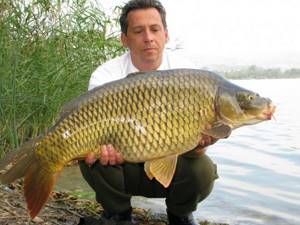
- The key to success in carp fishing is the pleasant aroma of the bait. It is the aroma that can attract the interest of fish even from a long distance and hold it for a long time at the fishing spot.
- When going fishing, you should take several types of bait with you. Carp, like any other fish, can change its taste preferences. In order not to sit all day without a catch, it is recommended to purchase bait of both plant and animal or artificial origin.
- If there are no bites for a long period of time, it is better to change the place of fishing.
Prey Habits
For fishing to be effective, you should know some of the features of catching prey. Beginners should ask what the carp bites on in a given body of water, and what gear will be the most catchy. Only in this case can you hope for a rich catch.
Carp is a schooling fish. However, the largest individuals try to stay separate from the smaller ones. Despite this, in one flock there are carps of various weights and sizes. Usually they do not “walk” densely, but gather in long lines. The number of individuals in a school is never as large as, for example, among bream. Usually it is equal to several dozen fish.
Carp is found in almost all bodies of water. He usually looks for deep and wide areas where there is a weak current or standing water, a soft clay or moderately muddy bottom. Carp love warm water, preferring heavily overgrown reservoirs. This fish stays at depth.
